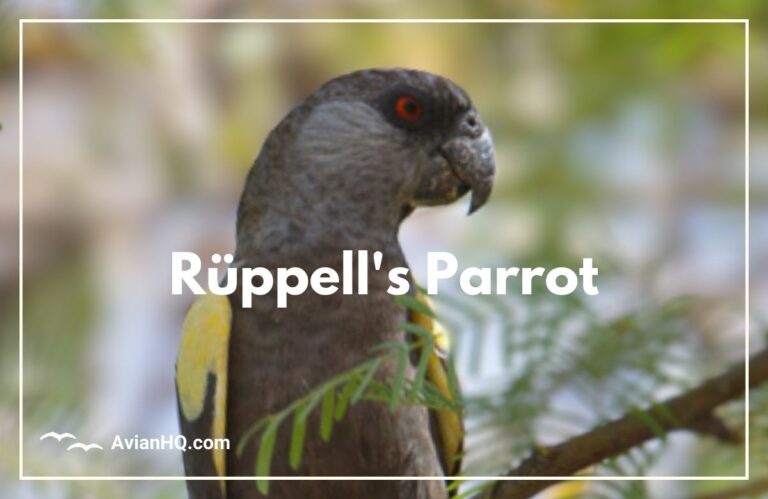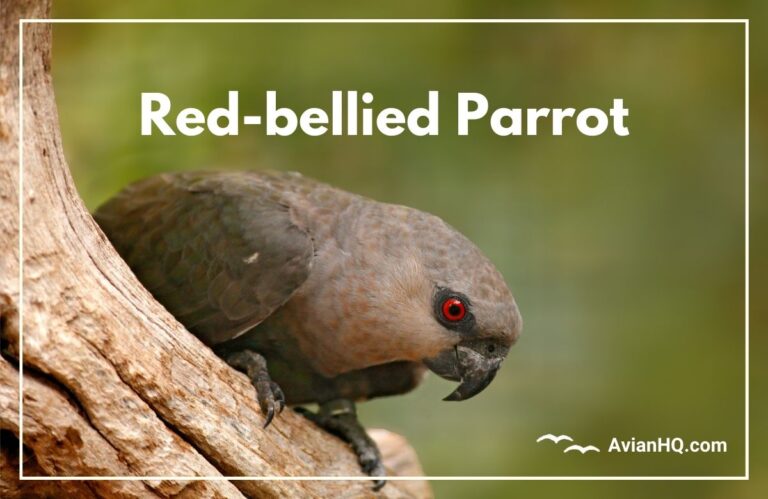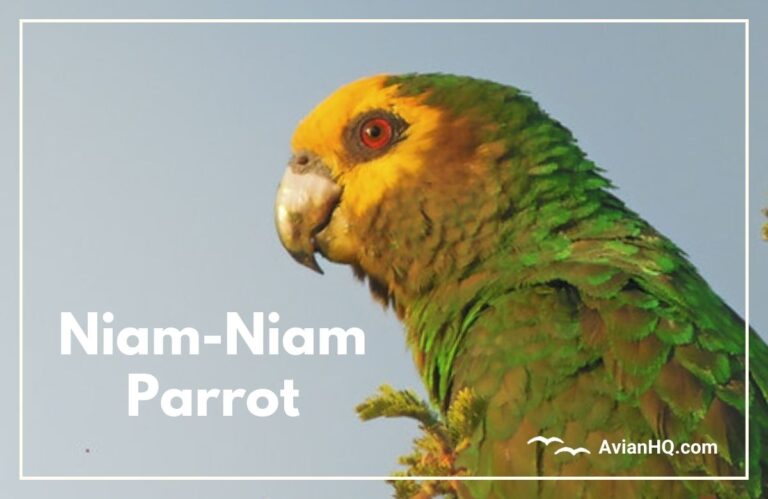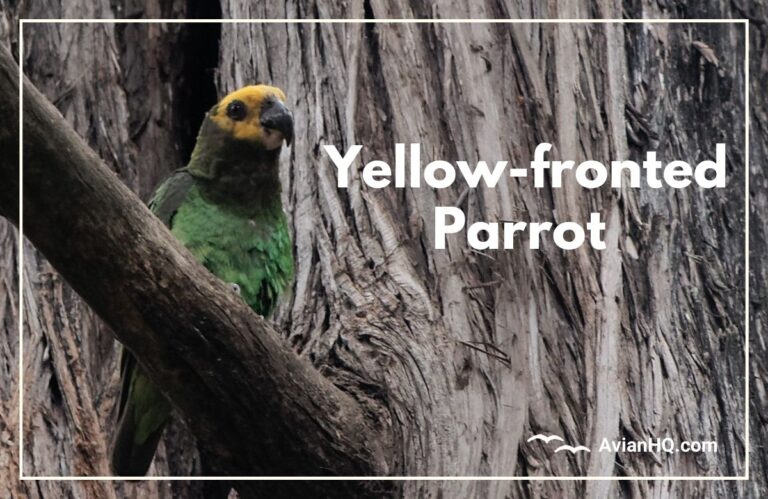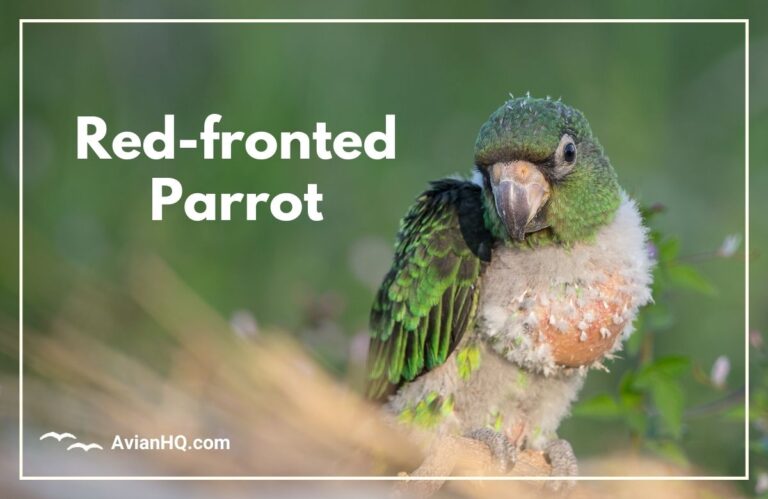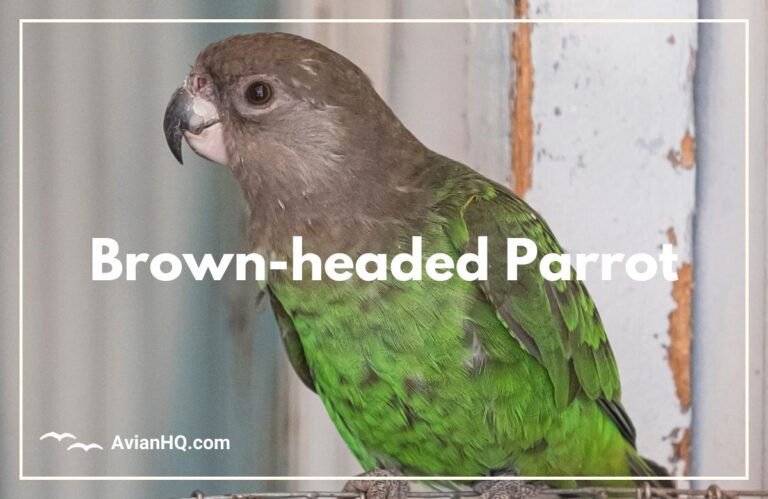Senegal Parrot (Poicephalus senegalus)
You first lay eyes on a Senegal Parrot perched in a pet store window or aviary at a bird fair. Its vibrant green, yellow, and gray plumage catches your attention. When you peer closer at this cute bird, barely 9 inches (23 centimeters) from head to tail, you notice its defining feature – a bright yellow or orange vest-like marking on its chest. If you are captivated by small, friendly parrots, the Senegal Parrot might be the perfect feathered companion for you!
Senegal Parrots, sometimes called “Sennies,” are native to the savannas and woodlands of Africa but they have become popular as pets and aviary birds across the world. Weighing only about 5 ounces (140 grams), these little acrobats are more manageable than large parrot species, especially if you live in an apartment or smaller home. Their reputation as quieter and less demanding pets makes them appealing.
In this comprehensive guide, you will learn all about Senegal Parrots – their origins, physical traits, typical behavior, care requirements, and even conservation status. Whether you currently own one of these charismatic birds or just admire them from afar, read on to uncover more about this small parrot’s big personality!
Senegal Parrots have vibrant, contrasting plumage that first draws the eyes of potential owners.
History and Taxonomy
The first known description of a Senegal Parrot came about over 250 years ago when French zoologist Mathurin Jacques Brisson observed the species in 1760. He named the bird “La petite perruche du Sénégal,” meaning “the small parakeet of Senegal.” The parrots likely attracted attention from early naturalists exploring Africa due to their bright colors and vocal nature.
Today, the Senegal Parrot’s scientific name is Poicephalus senegalus of the genus Poicephalus, which means “gray head” in reference to the distinctive gray caps on these birds. The species name senegalus refers to the country of Senegal in West Africa, at the heart of their native range.
Experts recognize two subspecies of Senegal Parrots:
- P. s. senegalus – The nominate subspecies with a yellow chest band, occurring from Senegal east to Chad
- P. s. versteri – A subspecies with an orange to red chest band, ranging along coastal countries in West Africa
The two subspecies have identical green, gray, and yellow plumage except for the brighter red-orange hue on P. s. versteri’s chests. Separated by habitat, their ranges meet but don’t overlap significantly. Some experts have proposed a third inland subspecies, P. s. mesotypus, but more evidence is still needed.
Senegal Parrots got their common name from the African country they were first observed in back in the 1700s.
Physical Appearance
Senegal Parrots are moderately sized, stocky parrots measuring about 9 inches (23 centimeters) long from the tip of the tail to the top of the head. Their wingspans reach up to 12 inches (30 centimeters). These petite parrots typically weigh between 4.2 and 6 ounces (120 to 170 grams).
Their heads exhibit a distinctive charcoal gray color, which contrasts with a bright green back, wings, throat, and parts of the breast. Senegal Parrots wear a signature short, broad yellow or orange-red vest on their chests formed by colored feathers on the lower breast and belly. The yellow vest extends just part way down the belly on the P. s. senegalus subspecies, while the orange-red vest of P. s. versteri continues further between the legs.
Other notable physical features include:
- Steely gray beaks with a darker gray cere at the base
- Bright yellow irises in adults, darker when young
- Pinkish-gray feet
You can distinguish juvenile Senegal Parrots by their duller green and yellow plumage and darker eye color. However, you cannot easily discern males from females. DNA or surgical sexing gives the only reliable techniques. Subtle size and plumage differences provide clues but don’t guarantee accuracy.
With their trademark “vests,” Senegal Parrots offer one of the most vibrant looks among small parrot species.
Habitat and Distribution
Senegal Parrots inhabit a wide swath of Africa in a band along the southern edge of the Sahara Desert. Their native range extends from Senegal and Mauritania in the west to Chad in the east, and south to Cameroon and Nigeria.
These birds occupy drier, more open landscapes than rainforest species. You typically find Senegal Parrots living in savanna grasslands with scattered acacia trees, along forest-edge habitats, and in drier woodlands. They frequent agricultural areas and roost in old-growth trees.
Throughout their African range, Senegal Parrots largely reside in lowlands up to 3,000 feet (900 meters) elevation. The availability of food and water dictates their movements seasonally across the landscape. For example, they may congregate around fig or other fruiting trees.
There are no recorded stable populations of feral Senegal Parrots, likely because the species evolved for the niche environments of West Africa. However, escaped pets sometimes form small flocks in areas like Florida and California.
The arid savanna and woodland habitats of West and Central Africa house native populations of Senegal Parrots.
Diet and Feeding
Senegal Parrots are opportunistic, generalist feeders when it comes to their diet. They take advantage of the diverse fruiting trees, shrubs, grasses, and crops across their habitat.
Favored foods in the wild consist mainly of figs, African grapes, berries, pods, seeds, blossoms, and buds. Senegal Parrots use their strong beaks and feet to extract seeds and nuts from fruit much like macaws. Some of the many plants they forage from include acacia, oil palm, fig, kapok, and shea trees as well as banana plants.
At times, large flocks up to 20 birds descend on crops such as maize, millet, sorghum, peanuts, and rice, earning them pest status from farmers. But most food is naturally occurring. You may observe Senegal Parrots plucking seeds from grasses or acacia pods right off the trees.
In captivity, these parrots thrive on a staple diet of high-quality seed mix along with healthier additions like pellets, grains, sprouts, chopped fruits, and vegetables. Avoid an all-seed diet, which can lead to nutritional deficiency.
Senegal Parrots forage for a diverse mix of seeds, fruits, pods, and even human crops across their habitat.
Breeding and Reproduction
The breeding season for Senegal Parrots varies across their range, typically starting when ample rain brings vegetation and food sources to support rearing chicks. Courtship displays tend to involve mutual preening and feeding between paired birds. These monogamous pairs aggressively defend nesting cavities from competitors.
Senegal Parrots nest in natural tree holes and old woodpecker cavities located high off the ground for safety from predators. The female typically lays a small clutch of 2-4 oval-shaped white eggs roughly 1 inch (2.5 cm) in size. She incubates the eggs alone for 27-28 days while the male regularly brings food.
The chicks hatch with sparse white down and stay in the nest for about 9 weeks, growing bright juvenile plumage by around 3 weeks old. Both parents feed and take care of the young once they fledge. By 12 weeks, juveniles can feed themselves completely but may still associate in family groups for a period.
In captivity, Senegal Parrots require roomy enclosures, proper nest boxes, and a breeding diet to stimulate reproduction. However, careful hand-rearing helps socialize babies. Captive birds can start breeding as early as their second year.
From courtship feeding to feeding newly hatched chicks, bonded pairs of Senegal Parrots work together to raise young.
Behavior and Ecology
Senegal Parrots exhibit very social behavior as they squawk and fly between roosting and feeding areas. Their high energy shows in almost constant head bobbing and body motions. Strong beaks not only serve for cracking hard food items but also as tools to chew items like wood, feathers, and bark.
Most activity revolves around foraging for their nutritious foods. Senegal Parrots congregate in small flocks of fewer than 20 individuals and show cooperative behaviors like sharing knowledge of food locations. You may observe bonded pairs staying close together or siblings associating in a flock after fledging.
Outside of breeding season, these parrots roost communally in tree cavities or dense vegetation, returning to the same sites every evening. Early mornings and late afternoons mark peaks of social activity and noisemaking around roosts. Senegal parrots bathe regularly when water sources allow.
Acorns, pods, nuts, seeds, and fruits all get carried by foot back to a comfortable perch for consumption. Their strong beaks expertly separate edible parts from outer shells. You’ll know Senegal Parrots occupy an area from seeing discarded nut shells littering the ground below.
From dawn to dusk, the boisterous screams and flights of Senegal Parrots chatter across their roosting and feeding grounds.
Conservation Status and Threats
The global population size of Senegal Parrots remains unknown but is estimated to number over several hundred thousand birds. Their wide habitat range and steady numbers keep Senegal Parrots listed as Least Concern on the IUCN Red List.
However, trapping wild Senegal Parrots for the pet trade poses one of the biggest threats to continued population stability. An estimated several thousand birds get removed annually from countries like Mali and Guinea-Bissau despite legal protection. Habitat loss also negatively impacts local numbers.
The Convention on International Trade in Endangered Species (CITES) lists Senegal Parrots in Appendix II, which mandates special permits for any export of wild-caught birds. Unfortunately enforcement proves difficult across parts of Africa. Captive breeding programs help satisfy pet demand.
You can aid Senegal Parrot conservation by only purchasing captive-bred birds, protesting imports of wild-caught pets, and supporting organizations working with rural communities in Senegal Parrot habitat regions to find solutions.
Better enforcement of wild bird trade laws and habitat preservation provide keys to ensuring Senegal Parrots don’t require endangered species protections.
Cultural Significance
The vibrant colors and vocalizations of Senegal Parrots unfortunately attract excessive trapping for the cage bird trade. Their reputation as an easiest-to-keep and tamer African parrot fuels global demand. However, removal of too many wild birds could ultimately threaten local populations.
Since parrot-keeping first became fashionable in medieval times, Senegal Parrots traveled aboard ships bound for Europe and Asia. Historical records show Moors and Arabs trading these birds across the Sahara Desert long before that. Today the majority of pet Senegal Parrots are captive-bred.
Beyond the pet trade, human activities like logging, land clearing for agriculture, and climate change disrupt the savanna ecosystems Senegal Parrots adapted to over millennia. However, these resilient parrots now thrive in suitable manmade habitats like palm, fruit, and acacia tree plantations.
Senegal Parrots certainly suffer from human pressures. But through thoughtful captive breeding, habitat conservation, sustainable land use policies, and community engagement, we can provide these charming parrots a bright future.
From pets to agricultural pests yet also adapted survivors, Senegal Parrots walk a tightrope between conflict and coexistence with humans.
Conclusion
Whether glimpsing Senegal Parrots flitting through acacia trees silhouetted on an African sunset or watching one playfully gnaw a toy in a pet store window, their energy and personality shine through. The cute “Sennies” manage to cram big parrot presence into a small frame.
Beyond the vibrant plumage that first grabs your visual attention, Senegal Parrots connect to people through their behaviors and even their mischievousness. The way one tilts its head as you talk or learns to whistle a tune melts animal-loving hearts. And those clowning actions and acrobatics that make you laugh out loud further endear them.
Yet challenges remain for the species. From threats like excessive trapping for the pet industry to climate-change impacts on their specialized savanna habitat, Senegal Parrots represent both conservation success and warnings for the future. Support captive breeding programs, get involved in parrot research, and cherish responsibly kept pets.
If a pocket-sized buddy bursting with bright feathers, loud squawks that dissipate into snuggly shoulder naps, and non-stop antics fits your lifestyle, then open both your home and heart to a Senegal Parrot!


